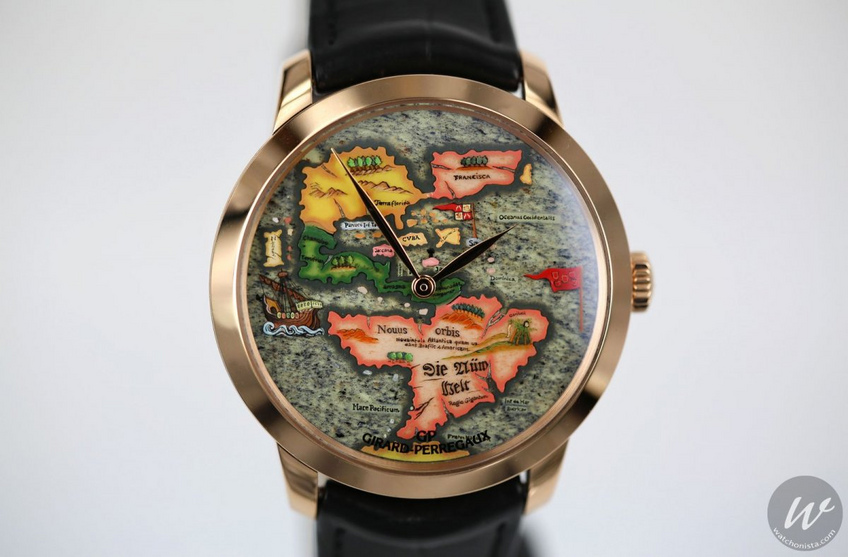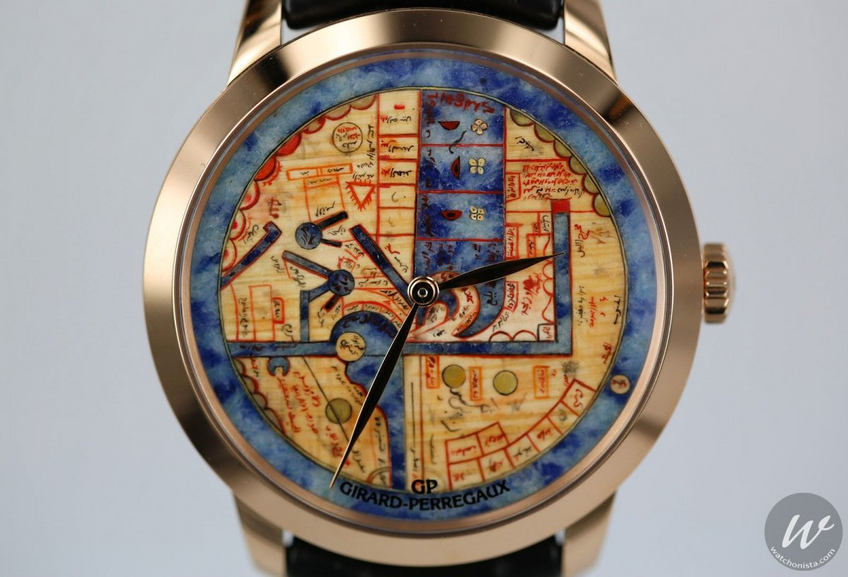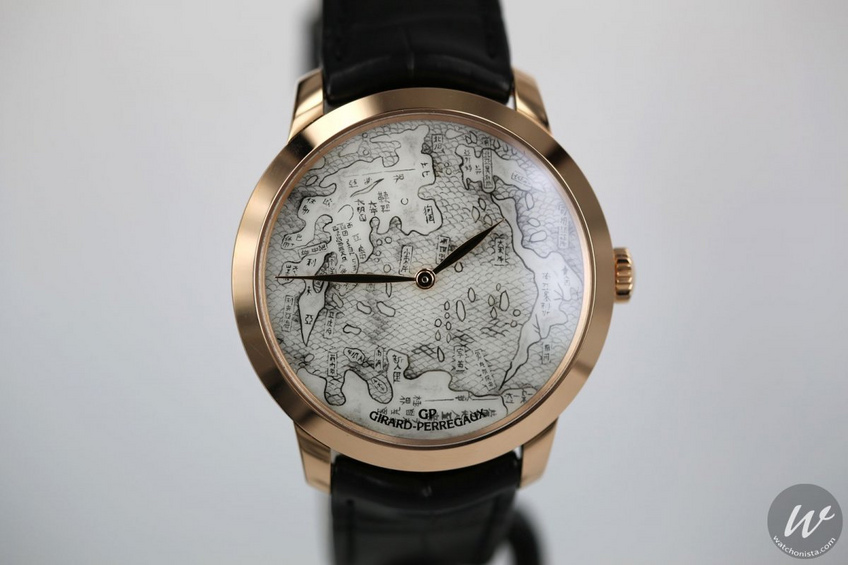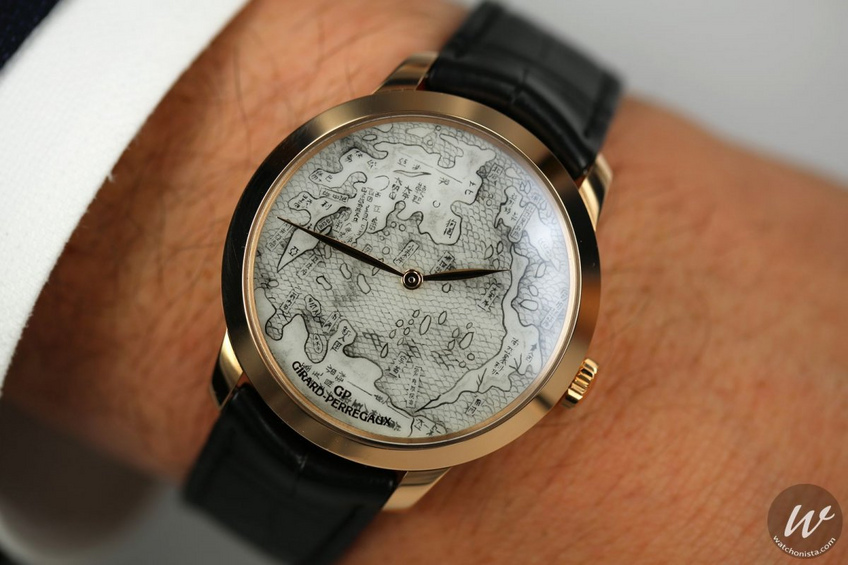

Girard-Perregaux: three watches and incredible skills
Girard-Perregaux reopens its Chamber of Wonders with three pieces dedicated to ancestral cartography. The brand ventures into magical terrain where detailed work and rare skills can be expressed.
Before there were museums in Renaissance Europe, there were cabinets of curiosities. These were inundated with all sorts of treasures, tales of fantasy, natural rarities, unusual discoveries and openings to secret and magical worlds. They were not only a real focus on the scientific knowledge of the time but they also elaborated on the most widespread superstitions.
Wonderful old cartographies
In 2015, the La Chaux-de-Fonds-based brand decided to revive this tradition and give it continuity on the available space that the dials of exceptional watches offer. Given the reduced size of the space, the job called for passionate, creative and above all, patient and meticulous craftspeople to carry it out.

This is where the Chamber of Wonders comes into the picture. The two words put together clearly evoke escapades and travels.
The 2015 theme – will there be more in years to come? – is cartography through the ages. In their quest for inspirational knowledge, the poets, writers, scholars and explorers who were usually the authors of these world maps, used to picture neighboring lands as homes to human monsters and imaginary animals. Borders, rivers and geographical dimensions were in fact the result of a multidisciplinary science where there were many discoveries still to be made. Those were times when the collective unconscious exerted influence on scientific observations. To us today, these old maps are even more precious and surprising since they still convey a dimension of space-time relativity.
The three maps all feature on the dials of the Girard-Perregaux 1966 timepieces that are characterized by their pink gold cases and self-winding in-house caliber.

Parchment dial
The first watch is the “Perle des Merveilles”; an old round map, which is a historical digest in itself. The Arab historian Ibn al-Wardi drew it during the first half of the 5th century AD. It was based on the theories of Ptolemy, the Greek-Egyptian astronomer and astrologer who lived in Alexandria in the early 2nd century AD, and who is considered to be the father of geography. Arab astronomy at the time sprung from the Middle Ages and was quite forward-thinking. It described constellations, drew sky maps and improved instruments such as the astrolabe. Back in our time, Girard-Perregaux has opted for Sodalite to transpose this vision of the world on the dial. The map is centered on the Arabian peninsular and features the mountains of Africa where the Nile starts and abruptly continues in the Mediterranean Sea. There we can see the faint outline of the Persian Gulf, the Indian Ocean, Sindh India and even China. Sodalite’s rich royal blue and crystalline structure could be interpreted as an encouragement to seek the depths of knowledge. Once it was hand-sculpted and hand-engraved, a painter used his miniaturization skills to cut out fragments of an old parchment with a scalpel and then added them to the dial as a mosaic. After that, the whole handiwork was coated with lacquer, which both stabilizes and protects it.

Ink from China and refined stone marquetry
The second map chosen by Girard-Perregaux conveys the Chinese vision of the world under the Ming dynasty. It was drawn by Matteo Ricci, an Italian Jesuite, who went to Macao in 1582. He was a theologian, a philosopher, a mathematician, a cosmologist, and an astronomer. The map portrays the world geography that had been discovered up to that time. Whilst, it already features five continents, Africa consisted of only Libya, and a Magellanic land seemingly outlined Australia. The map featured our round-shaped planet, a fact already established at the time, day and night durations, and even some intersidereal distances. The last detail to be added was of course the Chinese ink, which was delicately affixed to a grey-white dial that is deliciously ribbed and translucent. With its pale and dark shades, I personally find this piece the most accomplished of the three.

The last watch in this trilogy of meticulously replicated historical world maps features refined marquetry of semi-precious stones that make it the most colorful of the three world maps. It blends blue and pink aventurine, as well as Canadian nephrite jade and calcite. It is a type of dial that, notwithstanding the specialty of the craftsman working on it, requires hundreds of hours of meticulous work in order to cut and assemble it.
Such was the price to pay the new “Novus Orbis” by Sebastian Münster (1488-1552), a German Christian scholar who drew 142 maps and founded modern cartography, hovers above the constraint space of the dial. The tiny surface features a pink gold case and helps to transform a trilogy theme into references and dreams.







